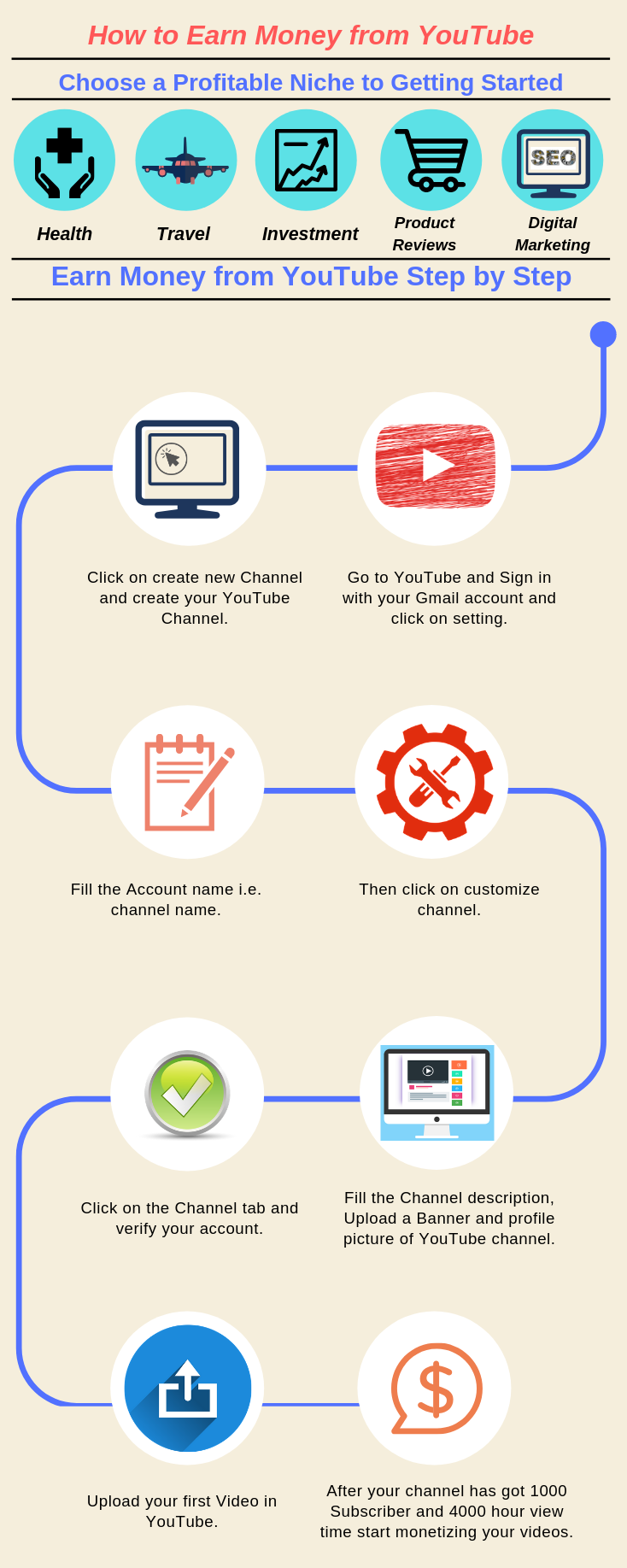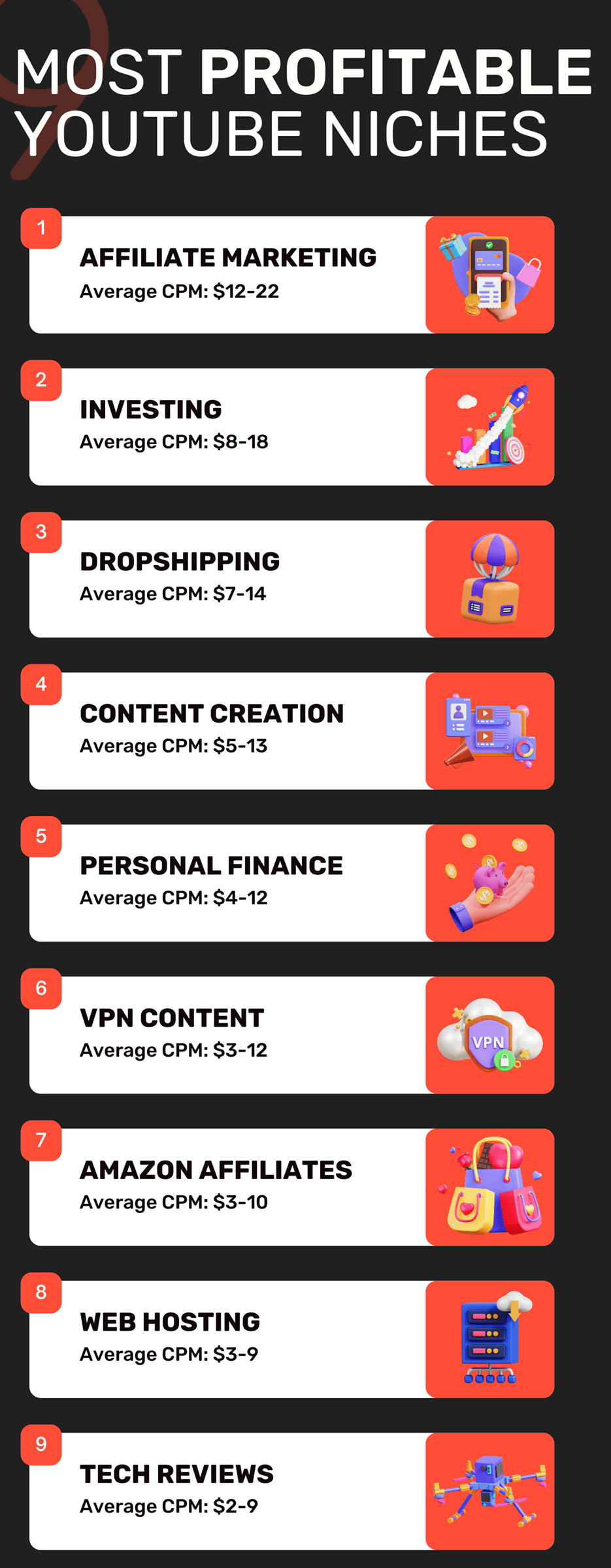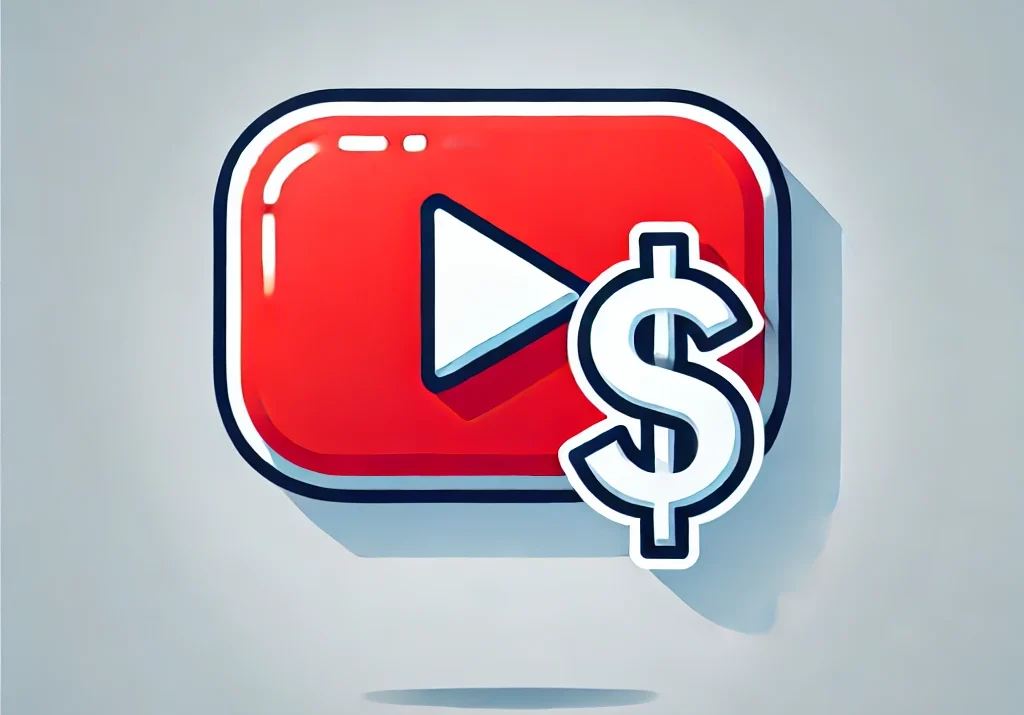To make money on YouTube, content creators can leverage multiple revenue streams, from ad revenue to sponsorships and merchandise sales. YouTube has become a highly lucrative platform, allowing individuals and businesses to monetize their channels effectively.
First of all, we have to consider estimating YouTube ad revenue isn’t an exact science.
Because of YouTube’s complex algorithm, it’s impossible to know the exact amount of ad revenue you’ll make every time someone watches your video. That means you can only calculate your YouTube pay-per-view revenue as an average.
While there are no guarantees when it comes to how much you can make from YouTube, a good rule of thumb is the more people watch your videos, the more money you’re likely to earn from ads on those videos.
| 1,000 views | $2 – $12 |
|---|---|
| 10,000 views | $20 – $120 |
| 100,000 views | $120 – $800 |
| 500,000 views | $1000 – $4000 |
| 1 million views | $1200 – $6000 |
| 10 million views | $12,000 – $60,000 |
| 15 million views | $18,000 – $90,000 |
| 20 million views | $24,000 – $120,000 |
Here’s a step-by-step guide on how you can earn income on YouTube.
1. Join the YouTube Partner Program (YPP)
The YouTube Partner Program is the primary way to earn ad revenue on YouTube. To qualify, you must meet certain eligibility criteria:
- 1,000 Subscribers: Your channel needs at least 1,000 subscribers.
- 4,000 Watch Hours: Your content must reach 4,000 public watch hours within the past year.
- Comply with Policies: Follow YouTube’s community guidelines, copyright rules, and advertiser-friendly policies.
Once approved, you can enable monetization and start earning from ad placements on your videos. Advertisers pay YouTube, and YouTube shares a portion with you, based on views and clicks. For example, YouTube creators earn around.
2. Enable Ads on Your Videos
Enabling ads through YPP opens up different ad types on your videos, which are crucial for increasing earnings. Types of ads include display ads, skippable ads, non-skippable ads, and bumper ads.
- Skippable Ads: Viewers can skip these ads after five seconds, with earnings based on ad impressions.
- Non-Skippable Ads: These run before or during a video and typically pay more, as they ensure full viewership.
- Bumper Ads: Short, six-second ads that run before videos and are non-skippable.
By strategically placing ads in videos (for example, placing non-skippable ads in longer videos), creators can increase earnings while balancing viewer experience.


3. Channel Memberships and Super Chats
For creators who have built a loyal following, Channel Memberships offer another income stream. With this feature, subscribers can pay a monthly fee in exchange for perks, like exclusive content, emojis, and shout-outs during live streams.
Super Chats and Super Stickers allow viewers to pay for their messages to stand out in live chats, often used during live streaming sessions. Super Chats can range from $1 to $500, depending on how much viewers choose to donate. These features are excellent for creators who actively engage with their audience through live streaming.
4. Sponsored Content and Brand Deals
Sponsored content and brand deals are lucrative sources of income for YouTube creators, especially those with a targeted niche or engaged following. In a sponsorship, brands pay you to feature their products or services within your videos.
- Negotiation: Sponsored deals often depend on your subscriber count, engagement rates, and content niche. Rates can vary widely, with influencers earning between $100 to $10,000+ per video, depending on the reach and audience.
- Authenticity: For successful sponsorships, choose brands that align with your channel’s focus and your audience’s interests. Authenticity is essential to maintain trust with viewers.
Brands might approach you directly, or you can join platforms like FameBit or Social Bluebook to connect with potential sponsors.
5. Affiliate Marketing
Affiliate marketing is a popular way to earn passive income on YouTube. Through affiliate marketing, you promote products or services in your videos, and if viewers purchase through your affiliate link, you earn a commission.
- Popular Affiliate Programs: Many YouTube creators join affiliate programs like Amazon Associates, ClickBank, and ShareASale to promote relevant products.
- How It Works: Add the affiliate link in your video description and encourage viewers to check out the product. Each sale made through your link earns you a percentage, typically between 5% and 20%.
Affiliate marketing works particularly well in product reviews, tech, beauty, or how-to channels, where viewers seek product recommendations.
6. Sell Merchandise
Selling merchandise is another effective way to monetize your channel, especially if you have a strong, loyal audience. Through YouTube’s Merch Shelf, eligible creators can showcase merchandise directly below their videos, providing a seamless shopping experience.
- Types of Merchandise: Common items include branded T-shirts, hats, mugs, and stickers.
- Platforms for Merchandise: Platforms like Teespring and Spreadshop integrate with YouTube, allowing creators to design and sell custom products easily.
- Earnings Potential: Earnings vary based on product markup and sales volume, but creators often keep a significant portion of the profit.
Merchandise is a great option for channels with unique branding or catchphrases, as it lets fans support creators while getting something tangible in return.


7. YouTube Premium Revenue
YouTube Premium provides an ad-free experience for paying subscribers. Creators whose content is viewed by YouTube Premium subscribers earn a share of the subscription revenue. Earnings from YouTube Premium are based on watch time—so the more a Premium member watches your content, the more revenue you’ll receive.
- How It Works: YouTube calculates your earnings based on Premium watch time and distributes a portion of subscription revenue accordingly.
- Additional Income: Although YouTube Premium earnings are usually less than ad revenue or sponsorships, they provide a steady supplement to overall income.
8. Crowdfunding and Fan Support
Crowdfunding platforms allow creators to receive direct support from fans. Platforms like Patreon and Ko-fi enable viewers to make monthly contributions or one-time payments in exchange for exclusive content, behind-the-scenes access, or other perks.
- Patreon: Allows fans to subscribe to different membership levels for various perks, like early access to videos, private Q&A sessions, and exclusive updates.
- Ko-fi: Works similarly to a tip jar, allowing fans to make one-time contributions.
Crowdfunding is ideal for creators who provide high-value or specialized content, and it allows fans to support channels without relying on YouTube’s monetization rules.
Tips for Growing Your YouTube Income
- Optimize Content: Ensure your video titles, descriptions, and tags are SEO-friendly to attract more viewers.
- Engage with Your Audience: Regularly interact with subscribers to build a loyal community.
- Diversify Income Streams: Use a combination of ads, sponsorships, memberships, and merchandise to maximize revenue.
- Upload Consistently: Channels that post regular content are more likely to grow faster and attract more monetization opportunities.
By combining multiple revenue streams, YouTube creators can maximize their earnings and build a sustainable income from their channel.
Related articles:
What Apps Make the Most Money? Top-Grossing Apps
The Best Apps to Make Money: Top Picks for Extra Income
Sources:
- https://capitalante.com/earn-money-from-youtube/
- https://www.thinkific.com/blog/youtube-money-per-view/
- https://support.google.com/youtube/answer/72857?hl=en










